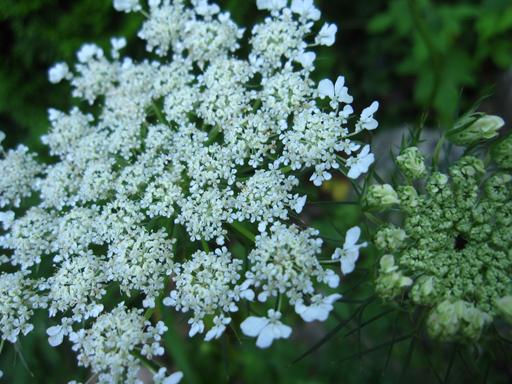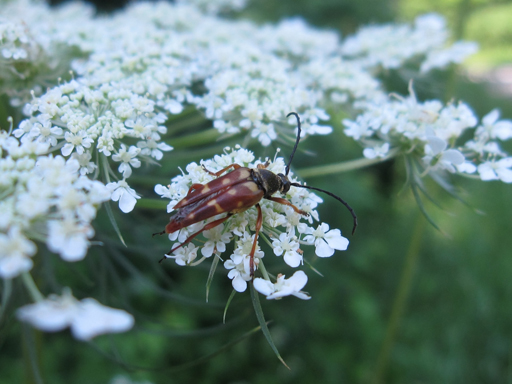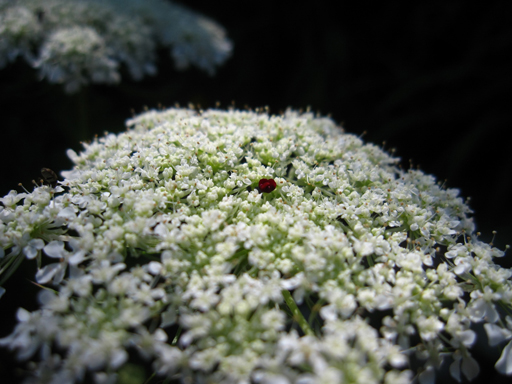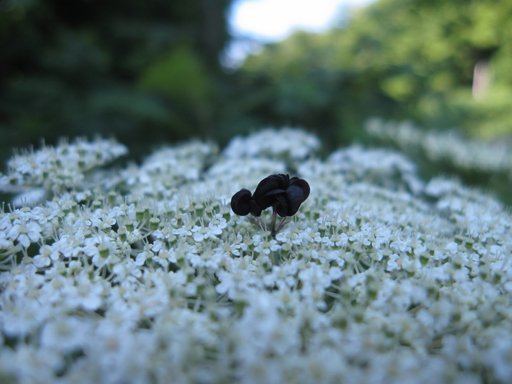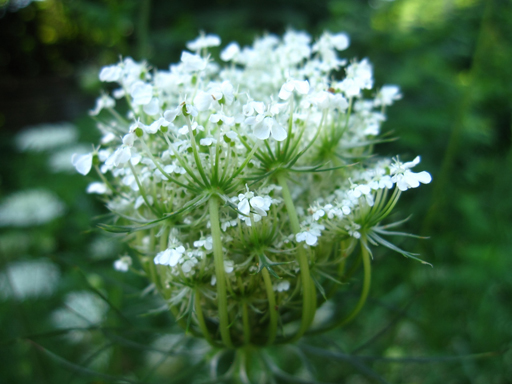Wild About Carrots and Queens
Let’s talk about Queen Anne’s lace. We all know it to see it but this quaint little plant packs a powerful punch where the environment is concerned. Add in the long list of past and present medicinal uses and this member of the wild carrot family just keeps on astounding.
Queen Anne’s Lace (Daucus carotais)
Growing up to 1.5 meters (5 feet), the stems are thin, leaves feathery, and flowers forming from compacted spheres of white snowflakes to flat, umbels that provide an excellent perch for over 60 insects. That’s right, it’s is believed that Queen Anne’s lace attracts over 60 insect species, providing them with pollen and nectar in addition to a comfortable resting place. See the flower longhorn beetle (Typocerus deceptus) below.
The flower itself is quite intricate and blooms tend to be long-lasting, sticking around from late spring to fall. Each umble is actually many hundreds of individual flowers and if you look closely, you’ll see that the sizes range considerably.
Poking out the top of the umbel, through the tiny white flowers is another sort of flower – one that can be red, deep purple or black. Its purpose? Well, that’s a mystery but there are many theories. Some botanists believe it has a different scent to attract pollinators and other insects; others believe it mimics an insect so when others fly overtop, they see it as a safe place to land or as a place to get a tasty insect meal. And of course, many other theories exist but there are far too many to list here. Each claims to have scientific backing and each claims to disprove the next. It’s quite remarkable to look at though…
Note that this tiny purple or red flower is a key feature that distinguishes Queen Anne’s lace from the poisonous water hemlock (Cicuta spp).
As the flower matures, it rolls up into what is called a ‘bird’s nest’ as seeds form within this tiny tumbleweed.
A Naturalized Plant
Many consider Queen Anne’s lace to be a weed and that’s fine – it’s certainly not native but is considered naturalized as it has been here since the 1700s, having come from North Africa and Eurasia. OMAFRA has it listed on its noxious weed list (note that common milkweed is also on that list).
It is, however, considered by many to be a beneficial weed and a companion plant to tomatoes, onions, lettuce, and the more edible carrots of today. And if you don’t want more of them, pop off the seedy heads before they mature.
Whether you keep it in your garden or not, one thing’s for sure, it’s here to stay. With seeds that can lay dormant for 3-5 years in the soil, and flowers that produce thousands of seeds each year, we might as well accept its presence and enjoy the benefits it brings to the ecosystem.
